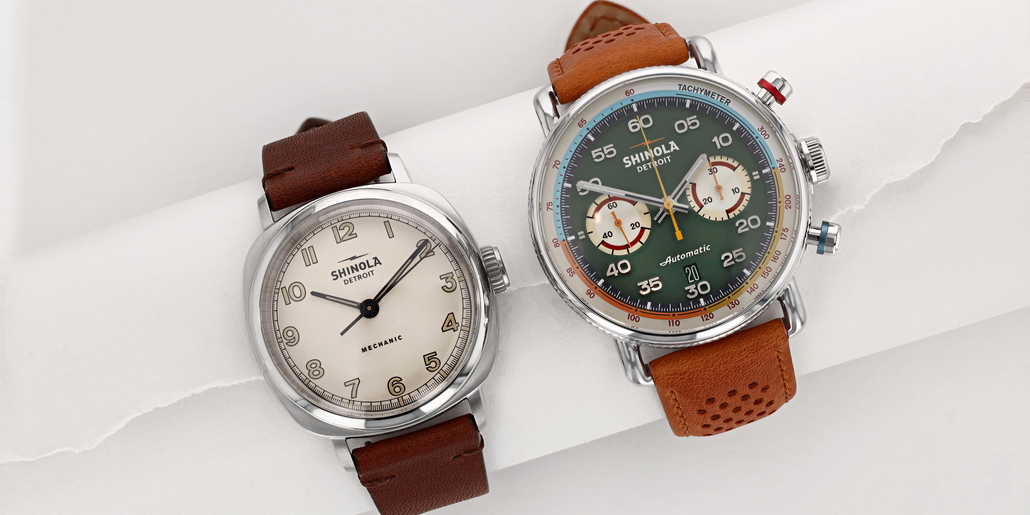Have you ever noticed how a leather watch strap softens and darkens with wear, or how a gold ring develops a soft, mellow sheen over the years? That beautiful, time-worn transformation is called patina. Far from being a flaw, patina is a desired quality that adds depth, character and value to jewelry and watches.
This article will define what patina is, how it makes pieces unique and identify common materials that develop it. We’ll also cover the difference between natural and artificial aging and provide tips on how to care for these timeworn treasures.
What Is Patina and How Does It Form?
Patina is a thin layer that develops on the surface of certain materials due to age and exposure. It is the result of a slow, natural chemical process, primarily oxidation. When a material like bronze, sterling silver or leather comes into contact with air, moisture and the oils from your skin, a reaction occurs. This reaction gradually changes the surface’s color, texture and luster.
Everyone‘s lifestyle and body chemistry are unique, which means the patina on your watch or jewelry will develop differently from anyone else’s. How you wear it, the climate you live in and the elements it’s exposed to all contribute to its one-of-a-kind finish.
The subtle darkening around the edges and the soft glow on the raised surfaces are marks of time and use that cannot be perfectly replicated. This uniqueness is highly desirable, often increasing the emotional and even monetary value of a piece.
Certain materials are known for their ability to develop a beautiful patina. Jewelers and watchmakers choose them specifically for this transformative quality.
Gold Patina
Gold doesn’t tarnish like silver, but over time, it can develop a subtle patina that adds depth and warmth to its surface. Lower-karat gold alloys, which contain metals like copper or silver, may gently mellow in color with wear, creating a soft, time-worn glow. This natural evolution enhances the character of rings, bracelets and watches, giving each piece a unique, lived-in beauty.
Sterling Silver Patina
While we often think of silver tarnish as something to polish away, a controlled patina can be beautiful. Over time, sterling silver naturally darkens as it reacts with air and moisture, creating soft gray or black tones.
What Is the Difference Between Tarnish and Patina on Sterling Silver?
Ultimately, tarnish and patina are the same chemical process—sterling silver reacting with air and moisture. The difference lies in perspective: tarnish is considered unwanted, while patina is appreciated for the depth, warmth and character it gives the piece.
Bronze Patina
Bronze, an alloy of copper and tin, is a popular choice for watch cases and bezels. When new, it has a bright, reddish-gold shine. Over time, it naturally darkens to a deep, rich brown, sometimes with hints of red or green.
Leather Patina
Patina isn’t limited to metals. High-quality full-grain leather, commonly used for watch straps, also ages wonderfully. When new, a leather strap may feel stiff and appear uniform in color. With exposure to sunlight, friction and the natural oils from your skin, it will soften, become more supple and develop a richer, deeper color.
Natural vs Forced Patina
The beauty of aged material has led some manufacturers to speed up the process. A forced, or artificial, patina is created using chemicals, heat or other treatments to give a brand-new item the look of a vintage piece. This allows customers to get the aged aesthetic without the wait.
The choice between the two depends on personal preference:
Proponents argue that nothing beats the authenticity of a patina earned over time. It reflects a genuine history and a personal connection between the owner and the object. The process is slow, organic and results in a truly unique finish.
Others appreciate the immediate satisfaction of a pre-aged look. It offers a consistent, controlled aesthetic from day one. This is perfect for those who love the vintage style but want their watch or jewelry to look that way right out of the box.
How to Care for Patinated Pieces
Caring for an item with patina is all about gentle maintenance. You want to keep it clean without stripping away the character you’ve worked so hard to develop.
Regular, gentle cleaning is fine. For watches and metal jewelry, you can wipe them down with a soft, dry cloth to remove daily dirt and grime. For leather straps, a simple wipe-down is also sufficient. Avoid harsh chemicals, abrasive polishes and ultrasonic cleaners, as these can easily remove the patina.
If a piece gets excessively dirty, you can use a damp cloth with a tiny amount of mild soap, then immediately dry it thoroughly. Moisture is a key driver of oxidation, so ensuring your items stay dry is crucial.
When to Leave Patina
The golden rule of patina is: if you like how it looks, leave it alone. Many collectors believe that removing the patina from a vintage piece is a mistake, as it erases its history and can diminish its value.

